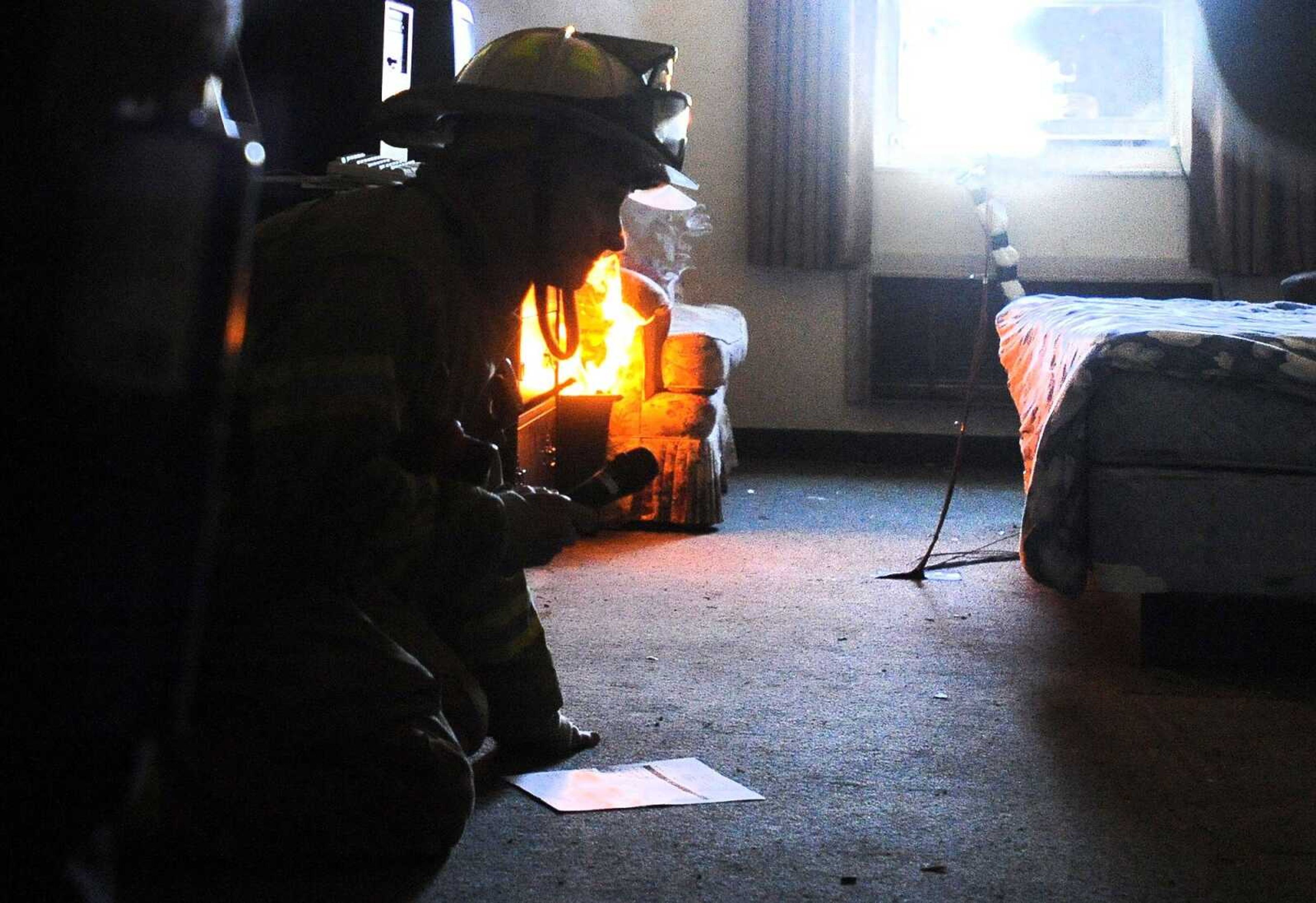Area firefighters train in old Drury Lodge
It was a simple process, for something as dangerous as lighting a fire and letting it grow large enough to put it out with hundreds of gallons of water. In six rooms of what was left of the Drury Lodge in Cape Girardeau, firefighters filled a small wastebasket with paper and placed it next to normal furniture items — a bed, television and stand and various tables and dressers. Then they lit the wastebasket and waited for a smoke detector to sound...
It was a simple process, for something as dangerous as lighting a fire and letting it grow large enough to put it out with hundreds of gallons of water.
In six rooms of what was left of the Drury Lodge in Cape Girardeau, firefighters filled a small wastebasket with paper and placed it next to normal furniture items — a bed, television and stand and various tables and dressers.
Then they lit the wastebasket and waited for a smoke detector to sound.
“Fire is a science,” Cape Girardeau fire chief Rick Ennis said. “It can be replicated, and you can predict how it can react. Fire science is very simple: Fire gives off heat, and water absorbs heat.”
What firefighters are dealing with is a change in furniture and building materials that allow fires to spread faster than they used to.
Plastic or petroleum-based furniture, open spaces that allow fire to suck up oxygen and lower-mass construction materials allow a flash over — when a room becomes a ball of flame — to start within four minutes. With natural-fiber materials, it used to take as much as 20 minutes.
For the training Thursday, firefighters were required to wait 4 minutes to respond after smoke was visible from outside the building. Four minutes is the average response time for the department, but battalion chief Brian Schaffer said a fire could be raging 15 minutes before firefighters could begin hitting it with water.
“The traditional way, it works, but it’s not very efficient,” Schaefer said.
The department also demonstrated other fire-fighting systems. One was a sprinkler system that can drop 40 gallons of water per minute on a fire once the inside temperature of a room reaches 155 degrees Fahrenheit. Sprinkler systems already are required in commercial buildings, such as hotels, by Cape Girardeau city code.
“Sprinkler systems have been around for decades, and they’ve proven their worth,” Ennis said.
The majority of fires Cape Girardeau firefighters encounter, however, are in single residential homes. Q-Dot Engineering demonstrated a new system that dispenses a fine mist at a rate of half a gallon a minute. A sensor is meant to spot the exact location of a fire inside a room, and the mist should float along with the oxygen to the center of the fire.
The mist system has been approved in the United Kingdom but not in the U.S., Ennis said.
Firefighters from around the area attended the training session Thursday, including representatives from Clayton and Lake of the Ozarks, Missouri, and Carbondale, Illinois.
bkleine@semissourian.com
(573) 388-3644
Pertinent address:
104 Vantage Drive, Cape Girardeau, Mo
Connect with the Southeast Missourian Newsroom:
For corrections to this story or other insights for the editor, click here. To submit a letter to the editor, click here. To learn about the Southeast Missourian’s AI Policy, click here.









